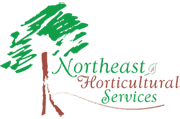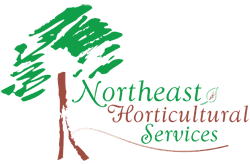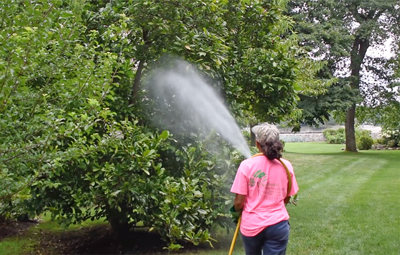IPM: The Sustainable Approach to Plant Healthcare
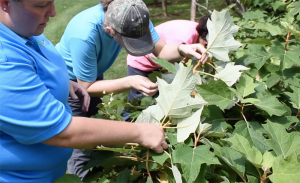 You may have heard of it, but what does it stand for?
You may have heard of it, but what does it stand for?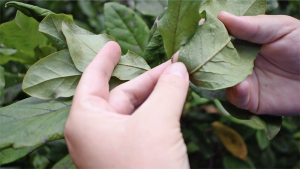 Which brings us back to IPM. Rather than just blindly spraying plant material on a schedule throughout the growing season, hoping that it gets broad control of pest problems that may or may not exist, and may not be the root cause of the problem, IPM is an ecosystem based strategy that relies on monitoring, biological and cultural control, and low-toxicity pesticides to minimize risk to people, beneficial insects, and the environment. There are dozens of aspects of IPM that we don’t have the time to discuss here, but the foundation is frequent monitoring by a licensed Arborist. During monitoring visits, we analyze the landscape as a whole, down to the individual plants. Pest problems are identified and handled using cultural and biological methods whenever possible. This could be pruning out infested or infect parts of a plant, adjusting irrigation, releasing beneficial insects, or installing pheromone traps. Only as a last resort are chemicals used, and whenever possible, low risk products, like Horticultural Oil and Neem, are used. As a result, we can get much more targeted control of pest problems, reduce pesticide use, and improve overall landscape health.
Which brings us back to IPM. Rather than just blindly spraying plant material on a schedule throughout the growing season, hoping that it gets broad control of pest problems that may or may not exist, and may not be the root cause of the problem, IPM is an ecosystem based strategy that relies on monitoring, biological and cultural control, and low-toxicity pesticides to minimize risk to people, beneficial insects, and the environment. There are dozens of aspects of IPM that we don’t have the time to discuss here, but the foundation is frequent monitoring by a licensed Arborist. During monitoring visits, we analyze the landscape as a whole, down to the individual plants. Pest problems are identified and handled using cultural and biological methods whenever possible. This could be pruning out infested or infect parts of a plant, adjusting irrigation, releasing beneficial insects, or installing pheromone traps. Only as a last resort are chemicals used, and whenever possible, low risk products, like Horticultural Oil and Neem, are used. As a result, we can get much more targeted control of pest problems, reduce pesticide use, and improve overall landscape health.
Especially with things like climate change affecting pest life cycles and growing pest immunity to chemicals, there are mounting complications with traditional Plant Healthcare practices. IPM is the sustainable choice to deal with the pest problems of the future.
If you are interested in seeing if this is the right type of program for your property, give us a call at 203-375-0553 or contact us here.
by Kate Odell, Licensed Arborist

Kate Odell, arborist and account manager for Northeast Horticultural Services, has a commitment to Integrated Pest Management (IPM) and sustainable tree and shrub care. Through her extensive knowledge of plant biology, proper pruning practices, and plant pathology, Kate offers a comprehensive suite of skills that can develop, improve, and maintain any landscape or outdoor space.
Arborist #S-6396

